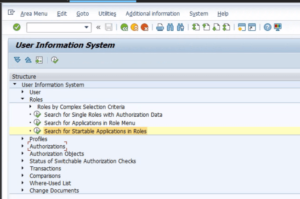Introduction
The HIPAA (Health Insurance Portability and Accountability Act) is a significant piece of legislation enacted in 1996 in the United States. It aims to address various concerns related to healthcare, including privacy, security, and portability of patient information. Here’s a detailed explanation of the key aspects of HIPAA:
1. Privacy Rule:
- Explanation: The Privacy Rule establishes national standards for the protection of individuals’ medical records and personal health information (PHI).
- Key Provisions:
- Patient Rights: Gives patients the right to access, request amendments, and know how their health information is used.
- Minimum Necessary Standard: Limits the use and disclosure of PHI to the minimum necessary for a particular purpose.
- Notice of Privacy Practices: Requires healthcare providers and organizations to inform patients about their privacy rights and how their information will be used.
2. Security Rule:
- Explanation: The Security Rule sets standards for protecting electronic PHI (ePHI) held or transmitted by covered entities.
- Key Provisions:
- Administrative Safeguards: Procedures and policies to manage the selection, development, implementation, and maintenance of security measures.
- Physical Safeguards: Physical access controls, facility security plans, and workstation use.
- Technical Safeguards: Access controls, audit controls, encryption, and integrity controls.
3. Breach Notification Rule:
- Explanation: This rule requires covered entities to notify affected individuals, the Secretary of Health and Human Services (HHS), and, in some cases, the media of a breach of unsecured PHI.
- Key Provisions:
- Notification Requirements: Specifies the content, timing, and methods for breach notifications.
- Exceptions: Outlines situations where notification is not required.
4. Enforcement:
- Explanation: HIPAA compliance is enforced by the Office for Civil Rights (OCR) within the U.S. Department of Health and Human Services (HHS).
- Key Provisions:
- Penalties: Non-compliance can lead to civil monetary penalties, ranging from fines to criminal charges and imprisonment.
- Audits and Investigations: The OCR conducts audits and investigations to assess compliance.
5. Portability Rule:
- Explanation: This rule addresses the issue of health insurance coverage when individuals change or lose their jobs.
- Key Provisions:
- Pre-Existing Conditions: Ensures that health insurance is available even with pre-existing medical conditions.
- Special Enrollment: Allows individuals to enroll in health plans outside of the regular open enrollment periods.
6. Compliance Challenges:
- Complexity: Achieving and maintaining compliance with HIPAA can be complex, especially for small healthcare providers and organizations.
- Technological Advances: Adapting to new technologies and ensuring they meet HIPAA requirements can be a challenge.
- Employee Training: Ensuring that staff members are well-trained in HIPAA compliance is crucial.
7. Importance of HIPAA:
- Protection of Patient Privacy: Ensures that individuals have control over their personal health information.
- Security of Electronic Health Records: Safeguards electronic health records from unauthorized access or disclosure.
- Facilitates Healthcare Transactions: Enables secure electronic exchange of health information, benefiting both patients and healthcare providers.
In summary, HIPAA is a crucial piece of legislation that sets the standards for the protection of patient information and the secure handling of electronic health records. It plays a vital role in safeguarding patient privacy and ensuring the integrity and security of healthcare data. Compliance with HIPAA is not only a legal requirement but also a crucial ethical obligation in the healthcare industry.




